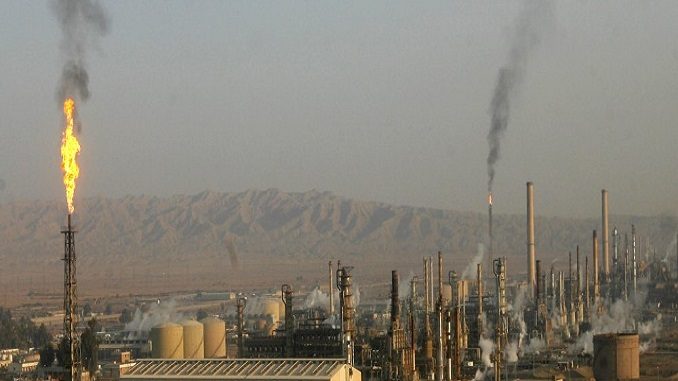
With the approaching military defeat of the Islamic State, Iran is stepping up its economic involvement in Syria. Iran is not waiting for the end of the fighting and the final overthrow of ISIS, but is acting to translate its military successes and that of Hezbollah into strategic and economic assets.
Yahya Rahim Safavi, military adviser to Iranian Supreme Leader and past commander of the Revolutionary Guards, said that Iran was striving to strengthen its economic relations with Iraq, Syria, and Lebanon, parallel to their military and political cooperation.
The “jewel in the crown” of the quadruple Shi’ite axis will be the construction of a railway from Iran through Iraq and Syria to the Mediterranean Sea. This enterprise will strengthen the economic ties between these countries and provide them with strategic depth. There is also a religious tourism aspect in the plan, as the “Shi’ite Train” will lead masses of Iranian pilgrims to the Shi’ite holy sites in Iraq and Syria.
Hossein Selahvarzi, Vice-Chair of the Iranian Chambers of Commerce and Industry, arrived at the Damascus International Fair in August 2017 as head of the Iranian economic delegation. Notably, the international fair was the first held since the outbreak of war in Syria, and the Iranian delegation was the largest of all foreign delegations, representing about 30 companies.
Selahvarzi addressed the Syrian government to promote free trade agreements between the two countries to facilitate the process of Syria’s rehabilitation. He made clear Iran’s desire to advance projects for the development and rehabilitation of Syria by the means of Iranian companies.
Syrian Electricity Minister, Mohammad Zuhair Kharboutli, who visited Tehran in September 2017, signed agreements to import five power plants from Iran to rehabilitate the power sector in Syria. On the agenda is the signing of additional contracts in excess of half a billion euros.
In a consortium with Venezuelan and Syrian companies, Iran announced its plans to build a refinery in Syria near Homs, with an initial production capacity of 70,000 barrels of oil per day. Iran also announced that it would rehabilitate two additional refineries in Syria. Iran’s intention is to make use of Syrian crude oil, which the Iranians would refine.
Alongside the military and strategic infrastructure, Iran is building in Syria – primarily a military airfield near Damascus and a naval base at Tartus Port – Iran is increasing its economic involvement in Syria. Since the end of the Iran-Iraq War, Tehran has acquired considerable experience in rehabilitating war-damaged infrastructure, which it now strives to implement in Syria.
The transition from Iranian military involvement to takeover of the Syrian economy will probably be relatively rapid, given Syria’s almost desperate need to rehabilitate its economy. Iran’s main competitor in rebuilding Syria is Russia.
Increasing Iranian economic involvement in Syria is also consistent with the profound demographic changes occurring in Syria since the outbreak of the war.
The dire refugee crisis within Syrian Sunni society has led to the takeover of Sunni-owned lands and property in the capital Damascus and provinces by Shi’ite elements from within Syria as well as Iraq – and with Iranian encouragement. It is reasonable to presume that these demographic changes augur considerable potential for a conflict between factions inside Syrian society in the future.
